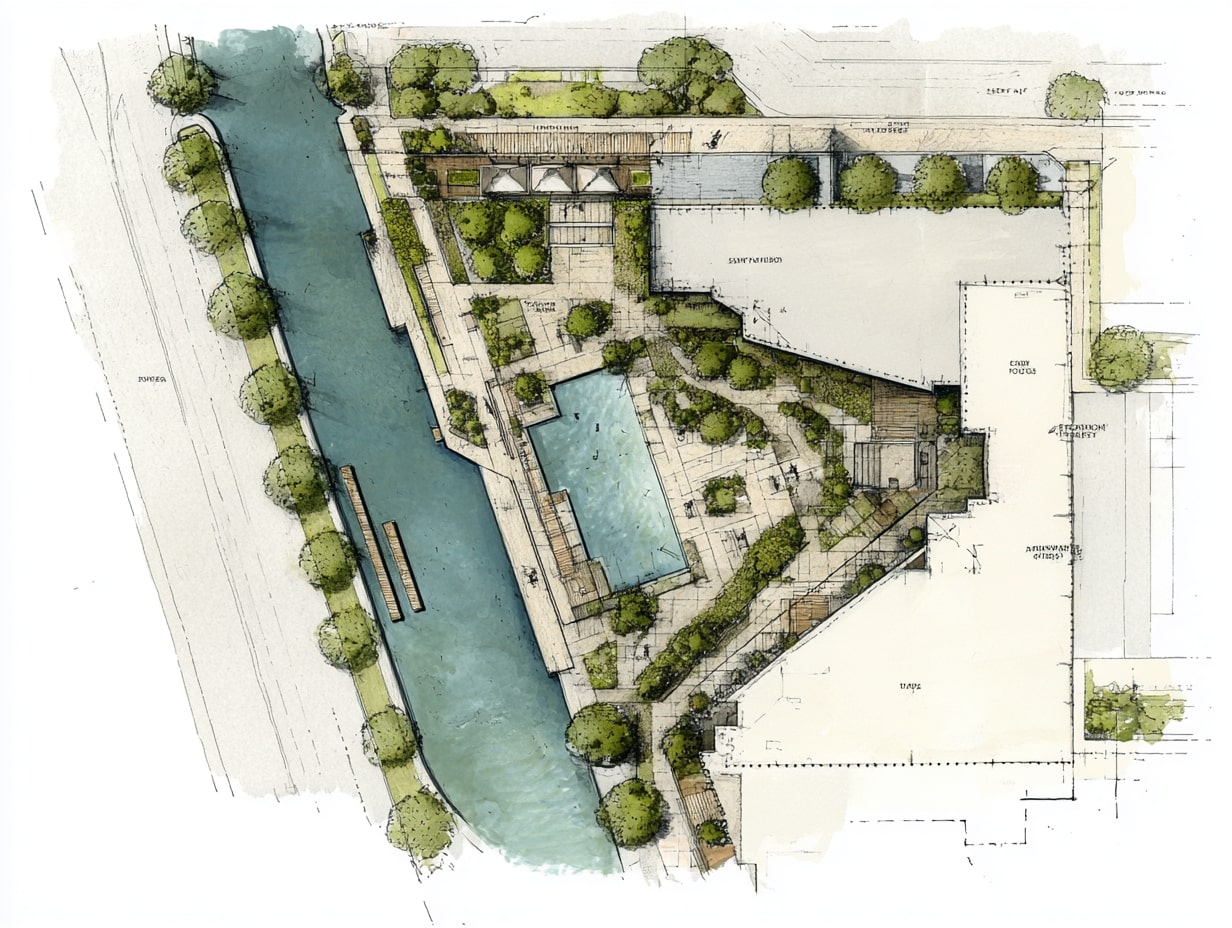- Home
- Articles
- Architectural Portfolio
- Architectral Presentation
- Inspirational Stories
- Architecture News
- Visualization
- BIM Industry
- Facade Design
- Parametric Design
- Career
- Landscape Architecture
- Construction
- Artificial Intelligence
- Sketching
- Design Softwares
- Diagrams
- Writing
- Architectural Tips
- Sustainability
- Courses
- Concept
- Technology
- History & Heritage
- Future of Architecture
- Guides & How-To
- Art & Culture
- Projects
- Interior Design
- Competitions
- Jobs
- Store
- Tools
- More
- Home
- Articles
- Architectural Portfolio
- Architectral Presentation
- Inspirational Stories
- Architecture News
- Visualization
- BIM Industry
- Facade Design
- Parametric Design
- Career
- Landscape Architecture
- Construction
- Artificial Intelligence
- Sketching
- Design Softwares
- Diagrams
- Writing
- Architectural Tips
- Sustainability
- Courses
- Concept
- Technology
- History & Heritage
- Future of Architecture
- Guides & How-To
- Art & Culture
- Projects
- Interior Design
- Competitions
- Jobs
- Store
- Tools
- More
Split System vs Ducted Air Conditioning: Which One’s Right for Your Home?

The decision between split system and ducted air conditioning is a significant choice that impacts your comfort and wallet. Air conditioning systems are found in three out of four Australian homes, which shows how much this decision matters to homeowners.
Several factors affect your choice between split and ducted options. Ducted systems give you complete climate control throughout your home and might boost your property’s value. Split systems are easier to install since they don’t need extensive ductwork. The efficiency levels between these systems vary significantly. Reverse cycle systems can reach up to 600% efficiency and provide both heating and cooling from one unit.
This piece, from air conditioning Adelaide specialists, Air Conditioning Doctor, will get into the main differences between these systems. You’ll learn about their advantages and get a complete breakdown of costs and maintenance needs. This information will help you pick the right system that fits your living situation perfectly.
Table of Contents
ToggleWhat is the difference between split and ducted systems?
Split system and ducted air conditioning are different in their design and how they work. You need to understand these differences to make a smart choice about cooling your home.
A split system air conditioner has two main parts. There’s an indoor unit on the wall and an outdoor unit that holds the compressor and condenser. These connect through insulated pipes instead of ducts. The indoor unit blows heated or cooled air right into the room, which works great for single spaces.

Ducted air conditioning works differently. It uses a central unit hidden in the roof space or outside your house. This unit connects to a network of ducts that send air through ceiling vents into multiple rooms. You’ll only see these vents in your living spaces, which gives your home a clean look.
These systems need different things for installation. Ducted systems need big changes, especially in older buildings. You need enough space for ducts in the ceiling or under floors. The process includes putting ducts and vents in every room you want to cool or heat.
Split systems are easier and faster to set up because they don’t need major structural changes. They use thin pipelines to connect outdoor and indoor units, which is perfect when you don’t have much roof space.
Temperature control is also different between these systems. Split systems let you control each indoor unit on its own, so you can have different temperatures in different rooms. Ducted systems usually control your whole house’s temperature from one thermostat, though newer ones can handle different zones.
The looks of these systems are quite different too. Ducted systems stay hidden except for the vents, which helps keep your home’s style intact. Split systems need wall units in each room, and this might change how your rooms look.
Comparing ducted vs split system efficiency and performance
The choice between split system and ducted air conditioning comes down to energy efficiency and performance. You need to understand how these systems work in real-life conditions to make the right choice.
Split systems use between 2kW and 6kW of energy. This makes them more energy-efficient for cooling single rooms. The average Adelaide household pays about $90 yearly to run a split system. Ducted systems need much more power—between 7kW and 24kW. Running these systems during summer could cost you around $3.40 per hour.
Modern ducted systems come with impressive zoning technology. This feature lets you divide your home into smaller areas that you can control both centrally and individually. You can cool or heat only the rooms you use. A well-implemented zoning system can cut energy usage by up to 20%. This makes ducted systems a competitive choice for energy efficiency.

Your comfort depends on noise levels too. Split systems run quietly—some as low as 19 decibels. That’s quieter than a whisper. Ducted systems also keep things peaceful. Models like the Daikin Inverter Ducted start from 33.3dBA.
Ducted systems often come with built-in HEPA filtration and purification. These remove allergens, mould, pollen and dust. Split systems excel at keeping individual rooms at steady temperatures. Rooms without units might experience temperature differences though.
Ducted systems work better for larger homes by providing consistent temperature control throughout. Smaller homes or spaces needing specific climate control might benefit more from multiple split systems. These often prove more budget-friendly.
The best choice depends on what you need. Consider your home’s size, how you use different spaces, and whether you want to control the climate in your entire house or just specific areas.
Cost, installation and maintenance breakdown
Air conditioning costs go way beyond the purchase price. You should understand the full picture of costs, installation complexities, and maintenance requirements to choose between split and ducted systems.
Ducted systems need a high upfront investment. These systems cost between $7,600 and $30,600, with entry-level options starting at $15,300. The price is steep because of complex installation work that includes ductwork and multiple vents throughout your home.
Split systems are easier on your wallet. A simple unit with installation costs about $3,100. The unit itself ranges from $900 to $4,300, and installation adds another $900 to $1,200 per unit.
Running costs vary between the two systems. Split units use 2kW to 6kW of energy and cost around $90 yearly for one unit. Ducted systems use more power – 7kW to 24kW. This means summer cooling could cost $3.40 per hour.
Modern ducted systems with zoning features can cut these costs. They cool only the rooms you use, which reduces energy usage by up to 50%.
Maintenance is simpler with split systems. You can clean the filters yourself, but yearly professional service helps. Ducted systems require more care. They need filter changes, professional duct cleaning every 3-5 years, and yearly servicing of central units and zone motors. Professional servicing costs between $460 and $610.
Ducted systems offer better long-term value, especially in bigger homes. They last longer and can boost your property’s value. These systems look better too – you only see the vents, which keeps your interior design clean. Split systems cost less upfront but their wall-mounted units might not look as nice.

Conclusion
Your choice between split system and ducted air conditioning ended up depending on your priorities, budget limits, and property features. Each system brings unique advantages that match different needs.
Split systems stand out as the budget-friendly choice for smaller homes or room-specific cooling. These systems are easier to install, cost less upfront, and need simpler maintenance. Their energy efficiency makes them perfect for cooling targeted areas.
Ducted systems need more money upfront but give complete climate control throughout bigger properties. Many homeowners find value in their aesthetic appeal since only subtle vents remain visible. The system’s modern zoning features have improved energy efficiency by a lot, which reduces the usual cost difference between both options.
Your system’s maintenance needs should shape your decision too. Split systems need basic upkeep that you can partly do yourself. Ducted systems require detailed professional service.
Take time to evaluate your property’s size, cooling requirements, priorities, and future plans. The right air conditioning system will keep you comfortable for years while saving energy and money. Split systems offer flexibility, while ducted air conditioning provides full coverage. Understanding these differences will help you pick the perfect system for your Australian home.
A licensed architect with hands-on studio experience, I translate complex design ideas into clear, engaging stories for a global audience. As a seasoned content writer and editor, I craft articles, project features, and thought-leadership pieces that illuminate emerging technologies, sustainable practices, and cutting-edge design trends—always with an architect’s eye for detail, accuracy, and narrative flow. My goal is to bridge practice and publication, giving fellow professionals and curious readers alike the insight and inspiration they need to push architectural boundaries.
Submit your architectural projects
Follow these steps for submission your project. Submission FormLatest Posts
Understanding Site Safety Footwear in Architectural Practice
Architecture is often discussed through drawings, models, and finished buildings, yet a...
General Arrangement Drawings in Architecture: The Backbone of Clear Design Communication
General Arrangement Drawings explained: what they are, when to use them, how...
The Ultimate Guide to Fencing in North Dakota: Choosing the Best Fence for Your Property
Watching a chain link fence twist in 70 mph winds near Minot...
Gaudí: Where Architecture Meets Science
Gaudí: Where Architecture Meets Science shows catenary arches, ruled surfaces, and biomimicry...












Leave a comment